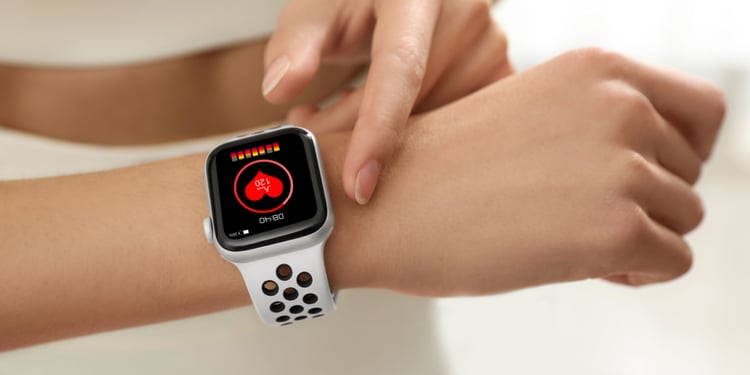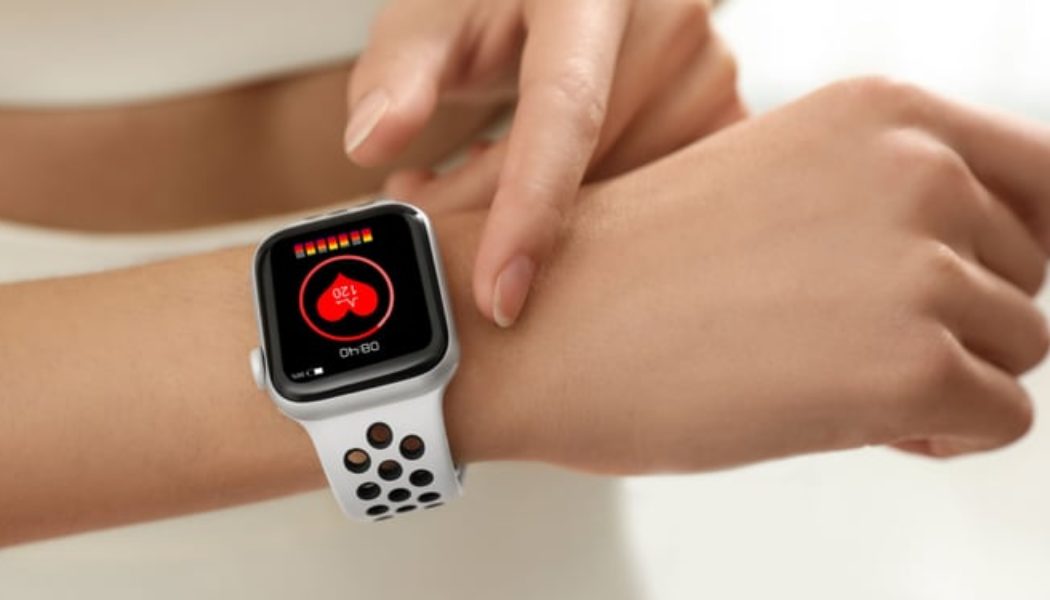
Are you doing enough to take care of your health? Are you
worried about potential health problems and want to be more proactive? Then, wearable
technology could be the solution you’ve been looking for. Wearables have become
increasingly popular in healthcare in recent years, with devices like fitness
trackers and smartwatches used to monitor vital signs, health status, and
activity levels.
-
Wearable
technology in healthcare has become increasingly popular, with devices like
fitness trackers and smartwatches being used to monitor vital signs, health
status, and activity levels. -
Wearables
encourage healthier behavior by helping you set health goals, collect data, make
the process more fun, and share your progress with others. -
Healthier
behavior leads to fewer hospital admissions by preventing chronic diseases,
enhancing immune function, and improving the management of existing physical and
mental health conditions. -
Wearable
devices drive early disease detection and intervention and higher patient engagement,
enable doctors to develop personalized treatment plans, and support remote
monitoring and care. -
Despite
challenges such as limited access for some patients and massive amounts of data,
wearables offer a promising way to reduce hospital visits and improve health.
However, wearables can do much more than just track steps and
calories. They can offer incentives to adopt healthier habits that improve your
overall well-being and help prevent hospital visits.
Wearable
technology has grown increasingly popular in healthcare in recent years, with
many people using devices like fitness trackers and smartwatches to keep track
of their vital signs, health status, and activity levels. Multiple devices generate
data that helps doctors spot and address potential problems early. Some wearable
technologies even encourage changes in people’s behavior that can reduce
hospital visits and readmissions and support better management of patients’
health. These factors help to defray overall healthcare costs and
improve treatment outcomes.
Wearables incentivize healthy behavior
Wearable technology has the potential to do much more than
just count steps and calories. It can record medical symptoms, track medication
adherence, and detect changes in your health status before they become serious.
Some specific ways wearables incentivize healthier behavior include:
Setting goals
Many wearables allow you to set daily or weekly goals for
various health metrics. For example, you might set a goal of reaching 10,000
steps per day, limiting yourself to a limited number of calories, or getting eight hours of sleep
per night. By keeping you focused on leading a healthier, more active
lifestyle, you unlock the real value of wearables. This makes you less likely
to fall victim to chronic conditions that require emergency room visits or
hospitalization.
Delivering data
Wearables such as smartwatches, fitness trackers, and
various patient monitoring devices keep records and provide real-time feedback. Data types include heart function, blood oxygen levels, blood glucose
concentration, and blood pressure. In addition, many devices use mobile apps to transmit the
data directly to your healthcare provider. This information enables doctors to
detect increased risks and give you advice before an emergency develops. The data also enables you to take charge of your health and embrace habits that prevent illness and injury. In addition, these measures help you to avoid hospital visits.
Making it fun
Some wearables use gamification methods to encourage healthy
behavior. For example, a wearable program might award badges or points for
reaching specific health goals or completing certain activities. This can make
improving your health feel more like a game, motivating many people.
Sharing progress
Numerous wearables allow users to connect with friends or
family using the same device or program. By sharing their progress toward
health goals with others and receiving support and encouragement, users have the
incentive to continue following healthy habits.
Providing personalized coaching
Some wearables offer personalized coaching based on a user’s
health data. For example, a wearable may suggest specific exercises
or activities based on your fitness level and goals. This personalized coaching
can help you stay motivated and keep you engaged in healthy behaviors.
Reduce hospital admissions
When wearables live up to their promise and drive healthy
behavior, people become more engaged in taking care of themselves. As a result, they develop
healthier habits, take their prescription medication more regularly, and follow
the treatment guidelines set by their doctors more effectively. This can reduce
hospitalization in several ways.
Better chronic disease prevention
Healthy behaviors such as regular exercise, healthy eating,
and not smoking can help prevent chronic diseases
like diabetes, heart disease, and cancer. Since being overweight or obese
increases the risk of these diseases, maintaining an ideal weight through
healthy eating and regular exercise can reduce your chances of developing them.
Patients who follow their doctor’s instructions on how and
when to take prescribed medication and introduce diet and lifestyle
recommendations are far more likely to remain healthy and prevent chronic diseases. With patient monitoring devices now available that track treatment
and medication adherence, doctors can detect symptoms and potential risks and
intervene early to avoid the need for hospitalization.
Enhanced immune function
Healthy behaviors such as getting enough sleep, reducing
stress, and staying hydrated can boost your immune system. In addition, regular exercise increases
your blood circulation and the delivery of immune cells to various body parts.
Wearables encourage exercise by helping to set targets, track
your performance against them, and connect with others online who monitor their
activity levels. Physical activity reduces the risk of inflammation that can
suppress the immune system and make you vulnerable to infections and illnesses.
Better manage existing health conditions
For those with illnesses such as asthma, COPD,
or hypertension, using wearables to incentivize healthy behaviors can improve the
management of your disorders. Regular exercise leads to a healthy weight and reduces
pain and inflammation. At the same time, a balanced diet improves overall
health, immune function, and well-being.
To follow the alerts and prompts delivered by wearables, you
must take your medications as prescribed and attend regular appointments with your
healthcare providers. These actions can help you manage your condition and
prevent complications. Meanwhile, managing stress through various apps and
programs allows users to control it and prevent it from increasing symptoms.
Effective management of all ongoing medical conditions
reduces the risk of complications requiring hospitalization.
Quicker recovery from illness or injury
If hospitalization is required, healthy behaviors help
individuals recover more quickly and avoid the risk of readmission. In addition, patients often
get fitted with monitoring devices after a hospital stay to track their vital
signs and symptoms and record whether they follow the treatment
recommendations and drug prescriptions.
Heightened mental health function
Healthy behaviors such as regular exercise and social
engagement improve mental health, reducing the risk of hospitalization due to
mental health conditions such as depression or anxiety. Wearables such as
smartwatches deliver diet and exercise programs, enable people to find
like-minded friends, build communities, and keep themselves informed about public
social events.
Similarly, research has shown seniors who remain engaged in
learning new skills and taking part in activities have better cognitive health and
emotional function. Taking care of their physical health, being active, staying
connected with social activities, handling stress, and managing conditions such
as blood pressure all play a significant role in avoiding mental health conditions
that could lead to hospitalization.
Improved patient outcomes
By incentivizing healthy behavior and enabling remote
monitoring, wearable technology can potentially improve patient outcomes, reducing
the need for hospital visits. In addition, wearables can detect changes in health metrics
such as heart rate, blood pressure, and oxygen saturation in real time. This
data enables healthcare providers to develop personalized treatment plans that improve
the effectiveness of care and reduce the risk of adverse events.
Challenges and limitations
While wearable technology has great potential in healthcare,
there are also challenges and limitations to consider. For example, not all
patients have access to wearable devices, and some may not be comfortable using
them. Wearables supplied by doctors are expensive to buy and often require practices to invest substantially in infrastructure and personnel training. Additionally, the costs associated with maintaining and storing data are high.
Wearable devices typically generate large amounts of data,
which can be challenging to manage and interpret. The privacy and security implications of wearable technology are paramount for healthcare providers. The data collected by these devices are highly sensitive and must be kept secure at all times. Therefore, providers must ensure that they have adequate measures in place to protect the data from unauthorized access and malicious activities.
Patient compliance is another challenge faced by healthcare providers who promote wearable technology to reduce hospital visits. For the
technology to be effective, it is essential that patients follow their doctor’s
instructions and use the devices properly. To achieve this, doctors
must ensure that their patients understand:
- How the technology works
- What data it collects
- How it can help them better manage their health
If a patient does not understand why they should use the device, they are unlikely to use it properly and may even stop using it altogether.
Wearable technology has the potential to transform
healthcare by incentivizing healthy behavior and facilitating
disease detection and early intervention. In addition, it can increase patient
engagement, enable providers to develop personalized treatment plans, support remote
monitoring and care, and ultimately improve health.
While the technology is not yet flawless, wearable devices
offer a promising way to reduce hospital visits and improve patient outcomes. By
incorporating wearables into their lifestyles, patients can benefit from more
personalized and effective care, leading to better health and quality of life.









